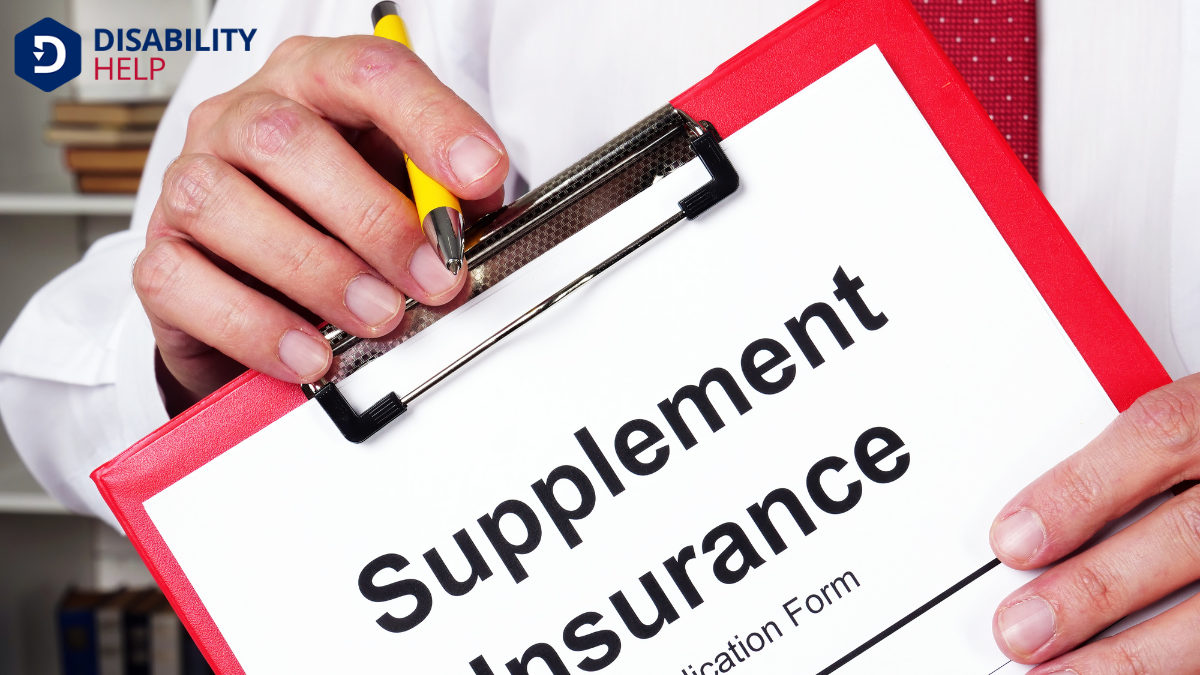Changing jobs can have significant implications for our disability insuranceA form of insurance that provides income to individuals who are unable to work due to a disability., as each employer might offer different benefits. It's essential to understand how these changes could affect our financial security and coverage. Are we prepared for potential gaps or differences in policy terms? Let's navigate this change together, ensuring we don't overlook any vital details that could impact our income protection and overall peace of mind.
Key Takeaways
- Evaluate portability of current disability insurance to see if coverage moves with you to a new job.
- Compare new employer's disability insurance details, including coverage limits, waiting periods, and salary replacement percentages.
- Check if the new policy covers pre-existing conditions and any probationary periods that may apply.
- Consider converting to an individual policy if current coverage isn't portable to avoid coverage gaps.
- Contact HR for detailed information on both current and new employer's disability benefitsFinancial assistance provided to individuals who are unable to work due to a disability, such as Soc... to ensure continuous coverage.
Understanding Employer-Provided Disability Insurance
When we consider changing jobs, understanding employer-provided disability insurance becomes vital. Disability insurance acts as a financial safety net if we're unable to work due to illness or injury.
It's important to know whether our potential employer offers short-term, long-term, or both types of coverage. Short-term typically covers a portion of our salary for several months, while long-term might extend benefits for years.
Reviewing the policy details helps us grasp waiting periods, duration of benefits, and the percentage of salary covered. We should also check if the plan is employer-paid or requires employee contributions.
Knowing these elements allows us to make informed decisions about our financial stability during a job change. Let's make sure we're well-prepared for any unforeseen circumstances.
Assessing Your Current Disability Coverage

As we evaluate the disability insurance options offered by a prospective employer, it's equally important to review our current coverage.
We need to understand what benefits we're receiving now, such as the percentage of income covered, waiting periods before benefits kick in, and the duration of payments.
Let's examine the policy details, including any limitations or exclusions, and see if they match our needs.
Additionally, understanding whether our current policy is portable or tied to our current job is essential. Portability allows us to retain coverage if we change employers.
Knowing these details helps us make informed decisions about shifting coverage or supplementing it as needed.
Comparing New Job Benefits and Coverage Options
While exploring a new job offer, we must thoroughly compare the disability insurance benefits and coverage options available. It’s essential to understand what the new employer provides.
Let’s evaluate the differences in coverage limits, waiting periods, and benefit durations. We should ask if the new policy covers pre-existing conditions or if there’s a probationary period.
It’s important to take into account how much of our salary the policy replaces and any additional benefits offered, like rehabilitationThe process of helping individuals with disabilities achieve and maintain their optimal physical, se... services or mental health support.
Let’s also check if the coverage is portable, should we change jobs again. Finally, we should contact the HR department for detailed information and clarify any uncertainties.
Doing our homework guarantees we make an informed decision about our financial security.
Transitioning Without Losing Coverage
When we're changing jobs, it's essential to guarantee we don't lose our disability insurance coverage.
We should explore continuation options with our current plan while simultaneously checking the enrollment process for our new employer's benefits.
Additionally, let's consider any portability options available to maintain seamless coverage during the changeover.
Continuation of Coverage
Steering a job change can be exciting, but it’s vital to guarantee that our disability insurance coverage remains uninterrupted during the shift. We don't want any gaps that could leave us vulnerable.
First, let's review our current policy's portability options. Some plans allow us to continue coverage independently, even when we leave our job. It's important to confirm this before we resign.
If our policy isn’t portable, we might've the option to convert it to an individual policy. This typically means higher premiums, but it guarantees continuous protection.
Additionally, checking for any waiting periods in new employment can help us plan effectively.
Let's proactively communicate with our current insurer to understand our options and secure our peace of mind.
Enrollment in New Plan
After guaranteeing our existing disability insurance remains intact, it's time to focus on enrolling in a new plan with our new employer.
We should first review the benefits package offered. It’s vital to compare the new plan's coverage, waiting periods, and any exclusions against our previous coverage. This helps us understand any differences and make certain we've adequate protection.
Next, let’s check the enrollment deadlines. Missing these could leave us without coverage, so it’s important to act promptly.
We should gather necessary information, such as medical history, to complete the enrollment process smoothly. If questions arise, reaching out to the HR department or benefits coordinator can provide clarity.
Staying informed and proactive guarantees we shift smoothly without losing our disability insurance coverage.
Portability Options Available
While managing the shift to a new job, understanding portability options for disability insurance is essential to maintain uninterrupted coverage.
We often worry about gaps in protection during this change. Thankfully, many policies offer portability provisions. These allow us to convert group policies provided by our previous employer into individual ones. This means we can continue our coverage without interruption, even when our employment changes.
To make use of this, we must act quickly after leaving our job, as there might be deadlines for applying for portability.
We should review our current policy and reach out to our insurance provider to understand the terms and any potential cost changes. With this knowledge, we can guarantee our financial security remains intact during our career moves.
Exploring Supplemental Disability Insurance

How often do we think about the financial impact a sudden disability might've on our lives? Probably not enough.
That's where supplemental disability insurance comes in. This type of insurance can bridge the gap between what our employer-provided policy covers and what we actually need to maintain our standard of living if we're unable to work.
When considering a job change, it's essential to evaluate if our new employer offers sufficient coverage. If not, purchasing a supplemental policy might be a wise decision.
These policies can provide additional benefits, ensuring that our income is more secure, even during unforeseen circumstances.
Let's take control of our financial future by exploring our options and understanding how supplemental disability insurance can offer us peace of mind.
Evaluating the Impact of Salary Changes on Benefits
When we consider changing jobs, it’s important to understand how salary changes can affect our benefits, especially disability insurance.
Our salary directly influences the coverage level, as disability benefits often replace a percentage of our income. If we accept a higher-paying position, our potential benefits may increase, offering more financial security if we're unable to work due to a disability.
Conversely, taking a lower-paying job might reduce our benefits, which could impact our financial stability during unforeseen circumstances.
Let's also remember that some employers might offer enhanced disability coverage plans, which can be more generous than others.
It’s vital to review and compare these options carefully. By understanding how salary changes influence our disability benefits, we can make informed decisions that protect our well-being.
Maintaining Coverage During Employment Gaps
Managing employment gaps can be tricky, but it’s crucial to secure we maintain our disability insurance coverage during these periods.
Let's explore ways to safeguard our coverage even when we're between jobs:
- Review Existing Policies: Check if our current policy includes a portability option, allowing us to continue coverage independently.
- Explore COBRA: Although typically associated with health insuranceA system for paying for medical services, often covering preventive, diagnostic, and treatment costs..., COBRA can sometimes offer disability coverage extensions. It’s worth investigating if this applies to our situation.
- Consider Individual Policies: Securing an individual disability insurance policy could provide continuous protection, unaffected by job changes. This option might be more expensive, but it guarantees continuous coverage.
Understanding these strategies helps us stay protected during employment changes, maintaining financial security through life's uncertainties.
Let's be proactive in managing our disability insurance, assuring we stay covered no matter what.
Conclusion
As we navigate job changes, it’s essential we don’t overlook the impact on our disability insurance. Let’s review our current coverage, compare it with new opportunities, and guarantee we’re not left unprotected. We should check if our policies are portable and explore supplemental options if necessary. By being proactive, we’ll maintain our financial security even during changes. Remember, understanding and managing these shifts empowers us to make informed decisions for our future well-being.






